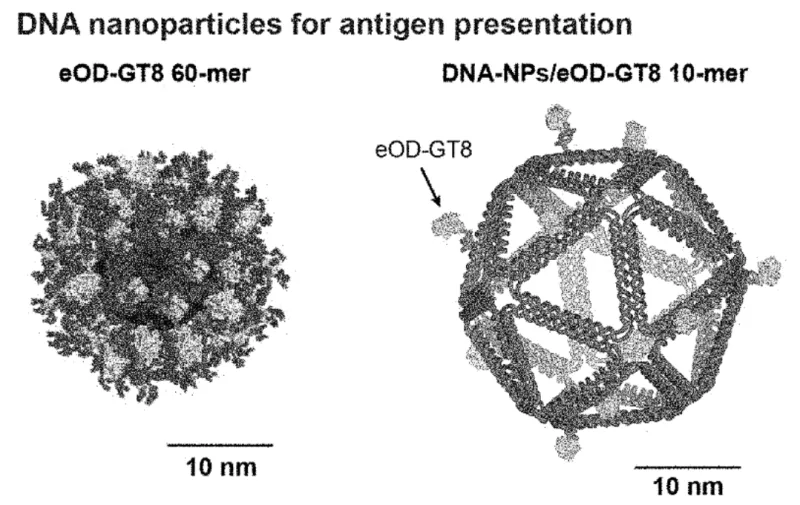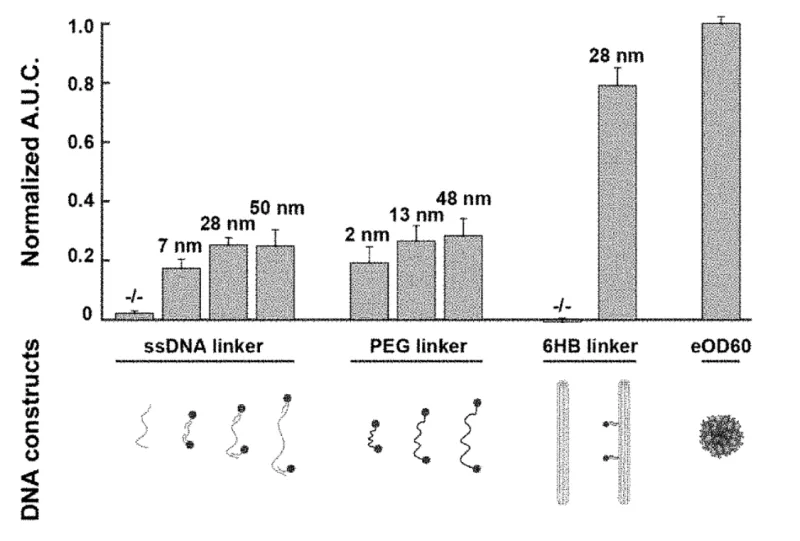Structured DNA Nanoparticle Platform for Protein- and Peptide-based Vaccines
This technology is a structured DNA nanoparticle platform to display antigens used in protein- and peptide-based vaccines, particularly those for human immunodeficiency virus (HIV). The platform is also applicable to other infectious diseases, autoimmune diseases, and cancer.
Researchers
-
nucleic acid nanostructure platform for antigen presentation and vaccine formulations formed therefrom
European Patent Convention | Published application -
nucleic acid nanostructure platform for antigen presentation and vaccine formulations formed therefrom
United States of America | Granted | 11,419,932
Figures
Technology
The technology is a DNA nanostructure of a defined geometric shape—a polyhedron or 6-helix bundle—with two to 100 antigen copies bound to its surface. The number of copies, the distance between them, their location on the nanostructure, and other physical features serve to improve the immune response triggered by the antigen compared to a control nucleic acid nanostructure containing at least one identical antigen copy. For HIV vaccines, the antigen is an HIV envelope glycoprotein gp120 (gp120) epitope. The technology can also include one or more moieties, including adjuvants, targeting molecules, and therapeutic agents, as well as a coating for increased stabilization and protection. To enhance immune response, these nanostructures can incorporate multiple copies of an immunostimulatory agent such as a toll-like receptor (TLR) agonist. The physical design of these immunostimulatory agents, as well as their locations on the nanostructure, provide increased immunostimulation compared to a single immunostimulatory agent.
Problem Addressed
Protein- and peptide-based vaccines, a major class of vaccination strategies, have not been effective against HIV. HIV poses challenges to the generation of prophylactic immune responses because of the antigenic diversity of its viral proteins and its similarity to self-epitopes. Therefore, current vaccination efforts have been limited by either safety or efficacy issues, and the need remains for an effective HIV vaccine. This technology holds potential as a vaccine against HIV and, more broadly, as a method of improving the antigen-induced immune response in vaccination against other diseases.
Advantages
- Has been shown to efficiently induce human B cell activation in vitro
- There is currently no HIV vaccine and therefore no established successful competitor
- This platform is not limited to HIV, as it could be applied to other infectious diseases, autoimmune diseases, and cancer
Publications
Rémi Veneziano, et al. Role of nanoscale antigen organization on B-cell activation probed using DNA origami. Nature Nanotechnology. 2020 June 29. doi: 10.1038/s41565-020-0719-0
License this technology
Interested in this technology? Connect with our experienced licensing team to initiate the process.
Sign up for technology updates
Sign up now to receive the latest updates on cutting-edge technologies and innovations.

